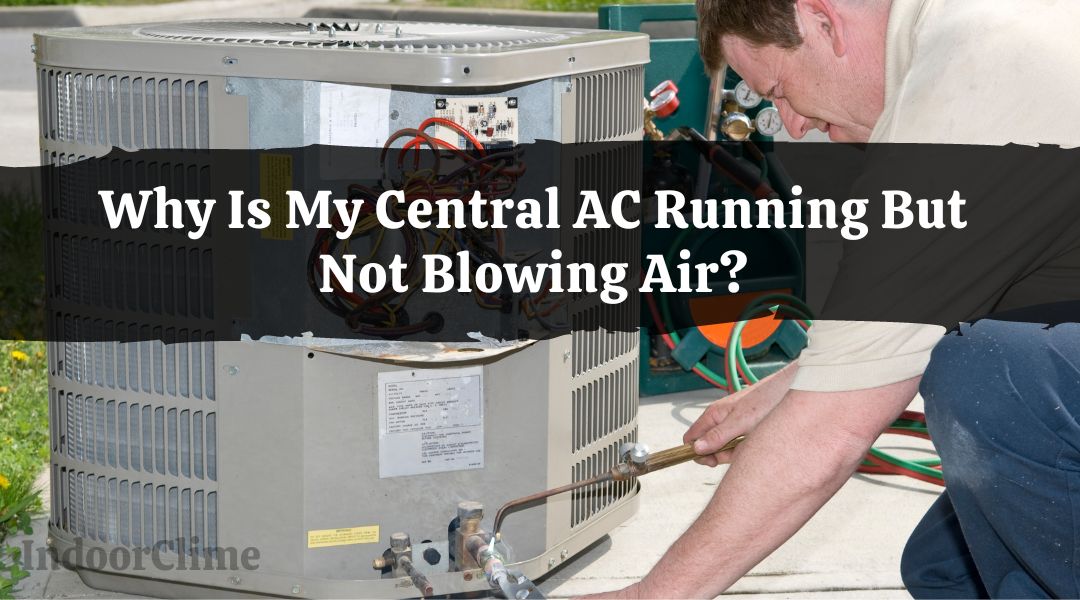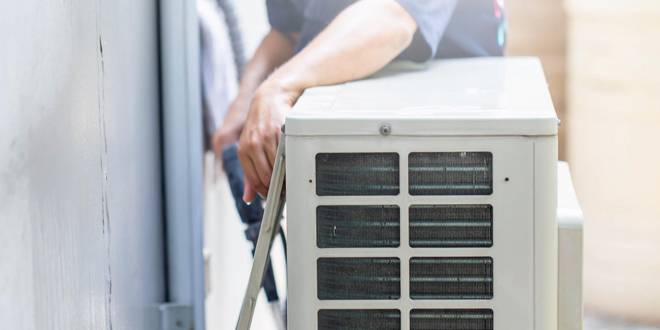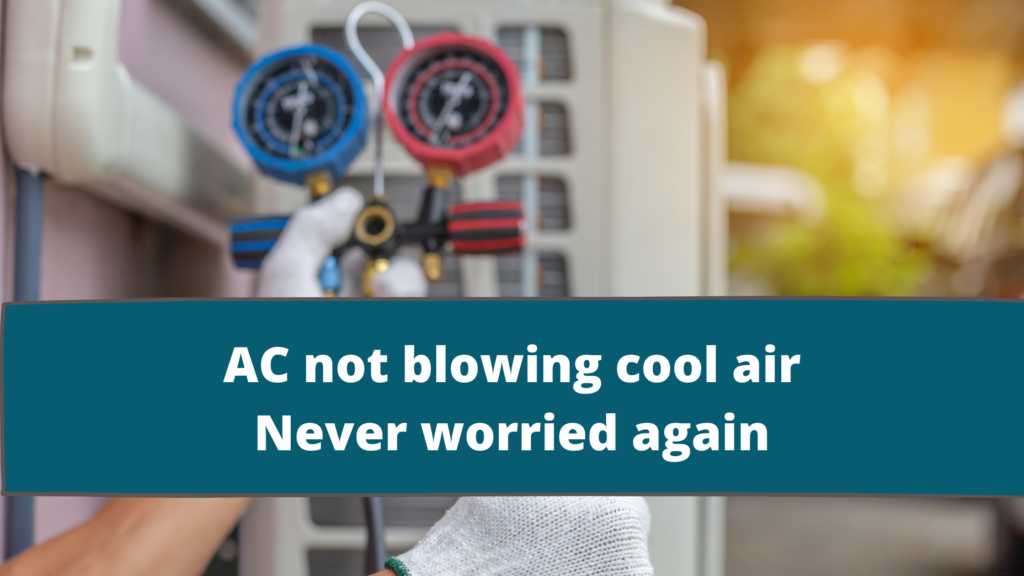Central Air Unit Blowing But Not Cooling

A central air conditioning system that’s blowing air but not cooling is a common problem, and thankfully, one that often has a straightforward solution. However, understanding the potential causes, from simple fixes to more complex component failures, is critical for homeowners, HVAC technicians, and facility managers alike. This article explores the common reasons behind this issue, offering diagnostic tips, troubleshooting steps, and guidance on when to call a professional.
Understanding How Central Air Conditioning Works
Before diving into the potential problems, let's briefly review the basic operation of a central air conditioning system. The system consists of two main units: the evaporator coil located inside your home (often within the air handler or furnace) and the condenser unit located outside. Refrigerant, a special chemical that easily changes state, cycles between these two units.
Here's a simplified breakdown:
- Evaporation: Warm air from your home is blown across the cold evaporator coil. The refrigerant inside the coil absorbs the heat, causing it to evaporate from a liquid to a gas. This cools the air, which is then circulated back into your home.
- Compression: The now-heated refrigerant gas is sent to the outdoor condenser unit. A compressor increases the pressure and temperature of the refrigerant.
- Condensation: The hot, high-pressure refrigerant flows through the condenser coil, where it releases its heat to the outside air. This causes the refrigerant to condense back into a liquid. A fan helps dissipate the heat.
- Expansion: The liquid refrigerant then passes through an expansion valve, which reduces its pressure and temperature, preparing it to absorb more heat in the evaporator coil. The cycle then repeats.
Common Reasons for Blowing Air But Not Cooling
1. Refrigerant Leaks
A refrigerant leak is one of the most frequent causes of a central air unit blowing warm air. Refrigerant is essential for the cooling process; without enough, the system cannot effectively remove heat from your home. Leaks can occur at various points in the system, often at connections or coils. Look for signs such as ice buildup on the refrigerant lines or a hissing sound near the units.
Diagnosis: An HVAC technician will use specialized equipment, like a refrigerant leak detector, to pinpoint the leak. Sometimes, leaks are so small they require injecting dye into the system and using a UV light for detection.
Solution: The leak must be repaired, and the system recharged with the correct type and amount of refrigerant. Refrigerant types are important here - R-22 is being phased out; newer systems use R-410A, and future systems are likely to use even more environmentally friendly refrigerants. Mixing refrigerants can damage the system.
2. Dirty Air Filter
A clogged air filter restricts airflow, making it harder for the evaporator coil to absorb heat. This can lead to the coil freezing up, further reducing cooling capacity. It’s a simple fix, but often overlooked.
Diagnosis: Visually inspect the air filter. If it’s visibly dirty or clogged, it needs to be replaced.
Solution: Replace the air filter with a new one of the correct size and MERV rating. Most manufacturers recommend changing the filter every 1-3 months, but this can vary depending on usage and air quality.
3. Frozen Evaporator Coil
As mentioned above, a dirty air filter can cause the evaporator coil to freeze. Other causes include low refrigerant levels and a malfunctioning blower motor.
Diagnosis: Look for ice buildup on the evaporator coil, which is typically located inside the indoor air handler. You might need to remove an access panel to inspect it.
Solution: Turn off the air conditioner and allow the ice to melt. This can take several hours. Once melted, address the underlying cause, such as replacing the air filter or calling a technician to check the refrigerant levels.
4. Dirty Condenser Coil
The condenser coil, located outside, needs to dissipate heat effectively. If it’s covered in dirt, leaves, or debris, it can’t release heat efficiently, reducing the system’s cooling capacity.
Diagnosis: Visually inspect the condenser coil. If it's dirty, it needs cleaning.
Solution: Turn off the power to the condenser unit. Use a garden hose with a gentle spray nozzle to clean the coil from the inside out. Avoid using high pressure, which can damage the fins. Coil cleaner solutions designed for HVAC systems can also be used, following the manufacturer’s instructions.
5. Malfunctioning Compressor
The compressor is the heart of the air conditioning system, responsible for compressing the refrigerant. If it fails, the system won’t cool properly. Compressor failures are often due to overheating, electrical issues, or mechanical problems.
Diagnosis: Compressor problems often manifest as a buzzing or clicking sound from the outdoor unit, or the unit may not turn on at all. An HVAC technician will use specialized tools to test the compressor's electrical components and performance.
Solution: Compressor replacement is a complex and expensive repair. It’s often more cost-effective to replace the entire outdoor unit, especially if the system is old.
6. Ductwork Issues
Leaky or poorly insulated ductwork can result in significant energy loss, reducing the amount of cool air that reaches your rooms. This is more of a problem with older homes, or homes with poorly installed duct systems.
Diagnosis: Look for obvious signs of damage or leaks in the ductwork. You may notice drafts in certain areas or hear air hissing from the ducts. A professional duct leakage test can precisely measure the amount of air loss.
Solution: Seal any leaks in the ductwork with duct tape or mastic sealant. Insulate uninsulated ducts, especially those in unconditioned spaces like attics and crawl spaces.
7. Blower Motor Problems
The blower motor circulates air across the evaporator coil and throughout your home. If the blower motor is not working properly, it will affect the system’s ability to distribute cool air. Problems can include a failing motor, a broken fan belt (in older systems), or a blocked blower wheel.
Diagnosis: Listen for unusual noises coming from the air handler. The blower fan may not be spinning at all, or it may be spinning slowly. An HVAC technician can test the motor's electrical components and inspect the fan.
Solution: Repair or replace the blower motor. If the fan belt is broken, replace it. Clean the blower wheel if it’s blocked with debris.
8. Thermostat Issues
Sometimes, the problem isn’t with the air conditioning unit itself, but with the thermostat. A faulty thermostat may not be sending the correct signals to the air conditioner, preventing it from turning on or cooling properly.
Diagnosis: Check the thermostat settings to make sure it’s set to "cool" and the temperature is set lower than the current room temperature. Also, check the batteries (if applicable) and make sure they are fresh. Try resetting the thermostat or replacing it with a new one.
Solution: Replace the thermostat. Consider upgrading to a programmable or smart thermostat for better energy efficiency and control.
When to Call a Professional
While some of these issues can be addressed by homeowners, others require the expertise of a qualified HVAC technician. It’s generally recommended to call a professional for the following:
- Refrigerant leaks
- Compressor problems
- Electrical issues
- Complex system diagnostics
Attempting to repair these issues yourself can be dangerous and may void the warranty on your equipment.
Cost Considerations
The cost of repairing an air conditioning system that’s blowing air but not cooling can vary widely depending on the problem. Here's a general idea of potential costs:
- Air filter replacement: $5 - $20
- Condenser coil cleaning: $75 - $150
- Refrigerant leak repair and recharge: $200 - $800
- Blower motor replacement: $200 - $600
- Compressor replacement: $800 - $2000+ (often more cost-effective to replace the entire outdoor unit)
- Ductwork sealing and insulation: $200 - $1000+ (depending on the extent of the work)
It’s always a good idea to get multiple quotes from different HVAC contractors before proceeding with any repairs.
Preventative Maintenance
Regular preventative maintenance can help prevent many of the issues discussed above and extend the life of your air conditioning system. Consider the following:
- Change the air filter regularly.
- Clean the condenser coil annually.
- Schedule a professional HVAC tune-up each year.
A tune-up typically includes inspecting and cleaning the system, checking refrigerant levels, and testing the electrical components.
Energy Efficiency and Lifespan
Air conditioning systems are rated for energy efficiency using the Seasonal Energy Efficiency Ratio (SEER). Higher SEER ratings indicate greater energy efficiency. Newer systems often have SEER ratings of 14 or higher, while older systems may have ratings of 10 or less. Upgrading to a more efficient system can save you money on your energy bills.
The lifespan of a central air conditioning system is typically 15-20 years. Regular maintenance can help extend the lifespan of your system. When the time comes to replace your system, consider the SEER rating, size, and features to ensure you get the best value for your money.
In conclusion, understanding the potential causes of an air conditioner blowing air but not cooling, coupled with preventative maintenance and prompt professional attention when needed, is key to ensuring your system operates efficiently and reliably for years to come.










